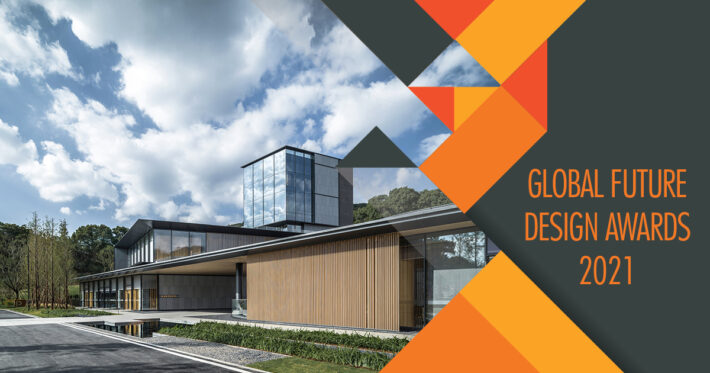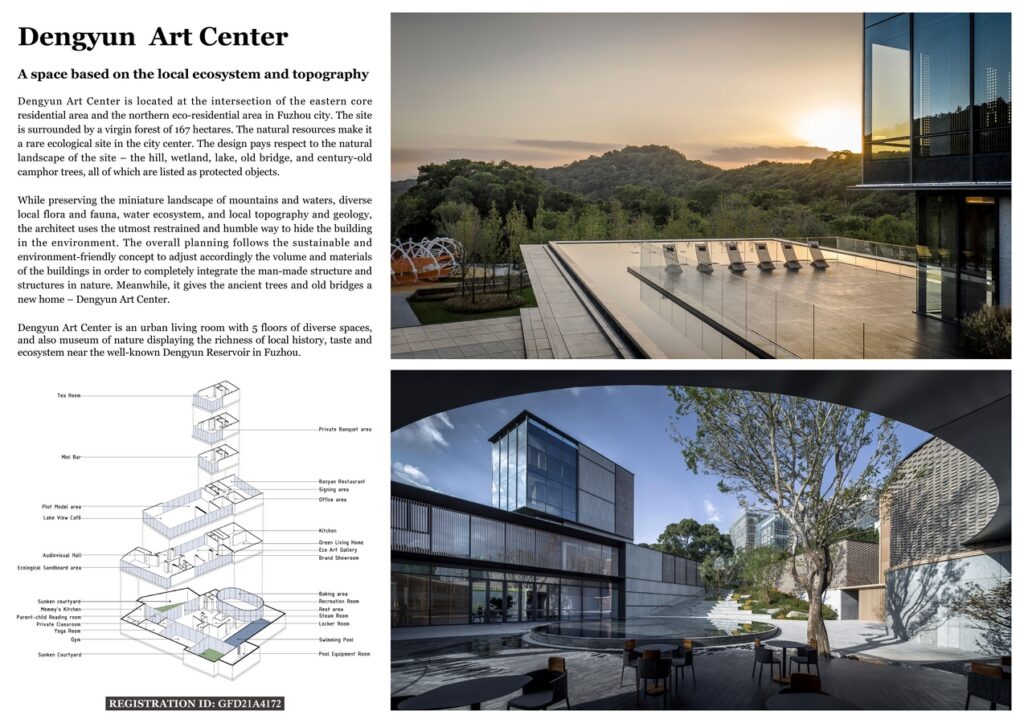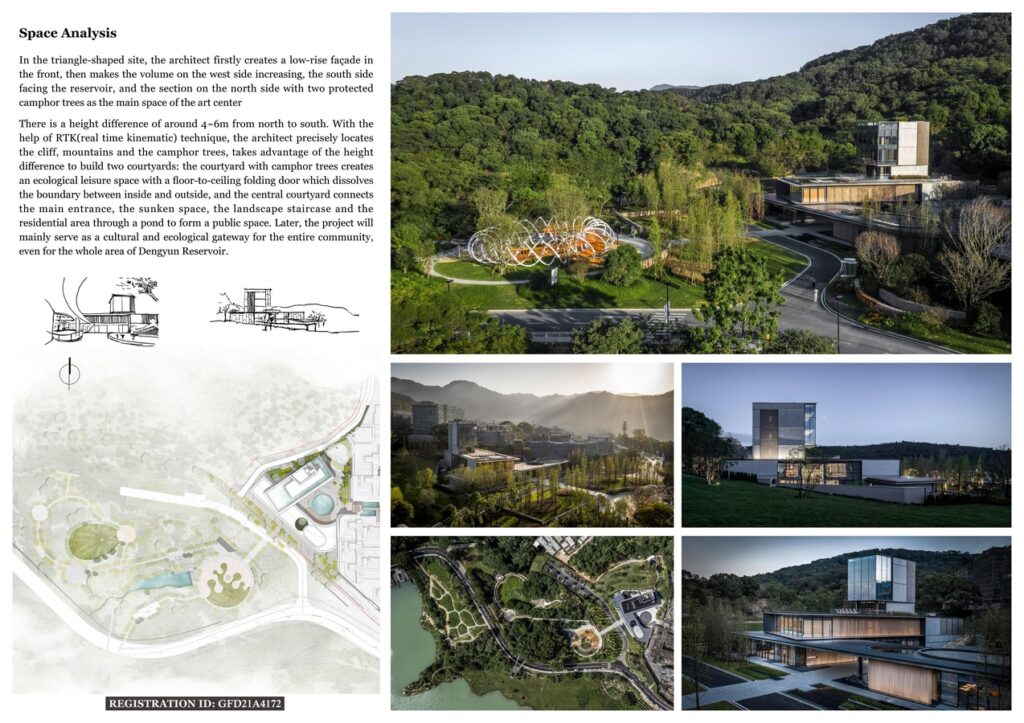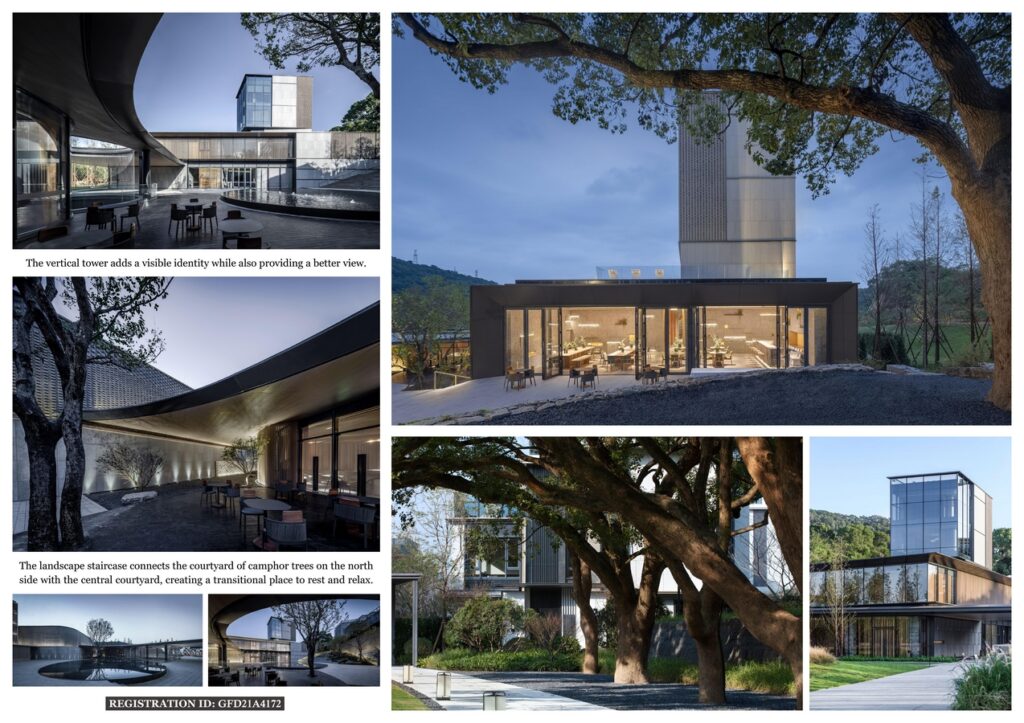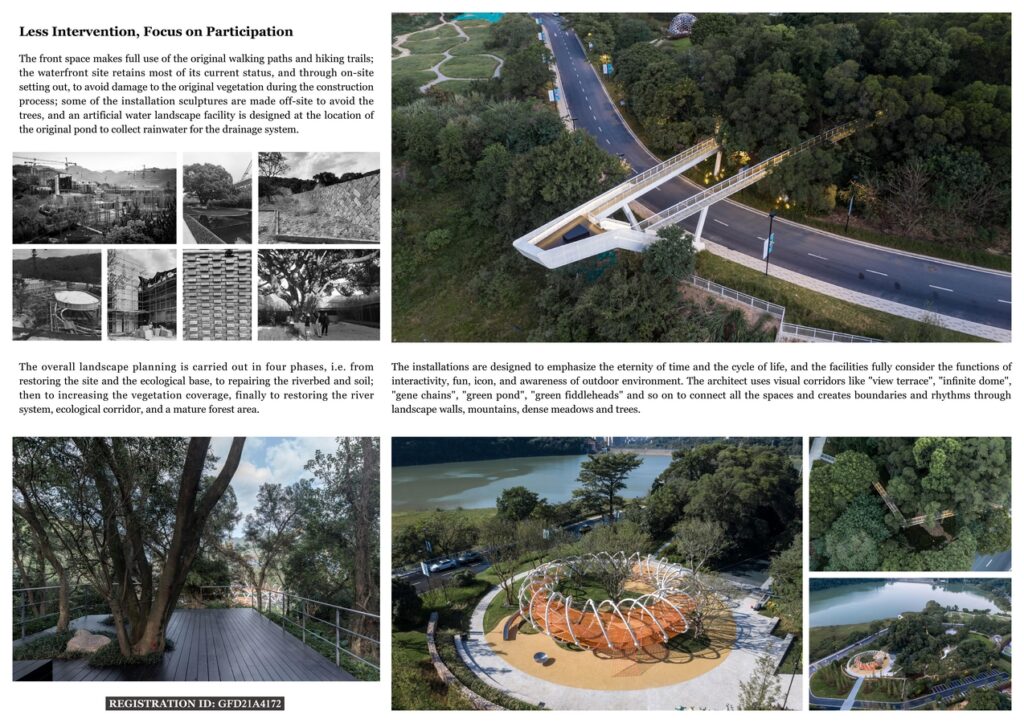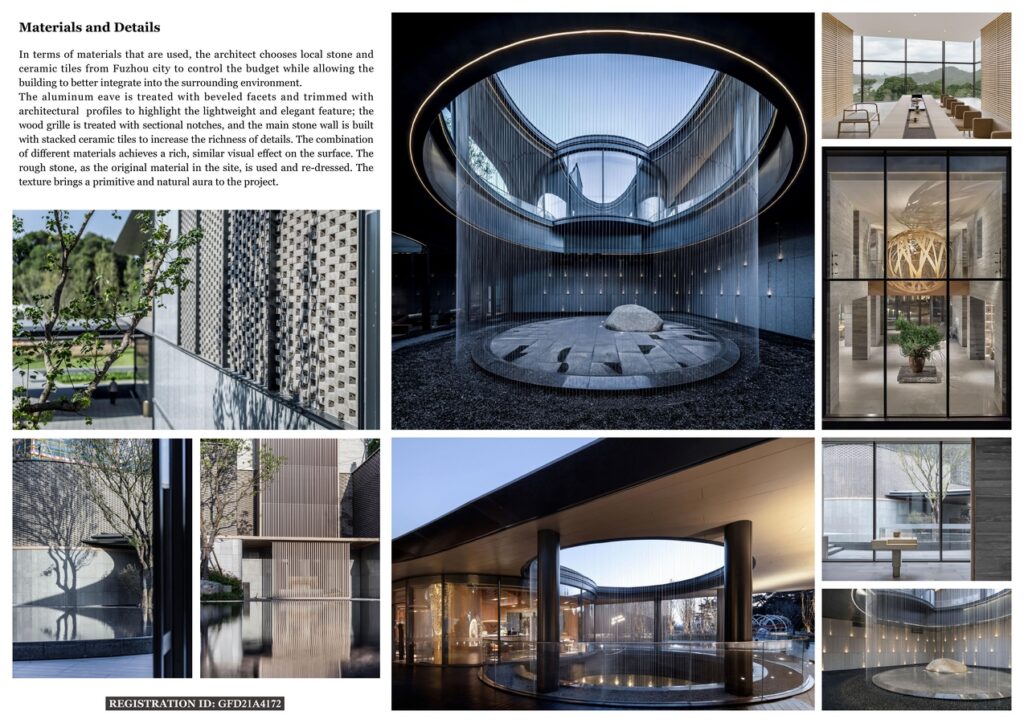The project is located at the intersection of the eastern core residential area and the northern eco-residential area in Fuzhou city. The site is surrounded by a virgin forest of 167 hectares. The natural resources make it a rare ecological site in the city center. The design pays respect to the natural landscape of the site – the hill, wetland, lake, old bridge, and century-old camphor trees, all of which are listed as protected objects. While preserving the miniature landscape of mountains and waters, diverse local flora and fauna, water ecosystem, and local topography and geology, the architect uses the utmost restrained and humble way to hide the building in the environment. The overall planning follows the sustainable and environment-friendly concept to adjust accordingly the volume and materials of the buildings in order to completely integrate the man-made structure and structures in nature. Meanwhile, it gives the ancient trees and old bridges a new home—Dengyun Art Center, a space based on the local ecosystem and topography.
Global Future Design Awards 2022: Discounted Entries Open Now! Save $50
Super Early Discount – 20th October 2021 to 30th December 2021 – $199 = $149
🏆 Winner
Global Future Design Awards 2021
Dengyun Art Center
Commercial Building Built
Firm
Shanghai PTArchitects
Architect/Designer
Shanghai PTArchitects
Design Team
Shanghai PTArchitects
Location
Fuzhou, China
Country
China
Photographer/Copyright
©Shanghai PTArchitects
Dengyun Art Center is an urban living room with 5 floors of diverse spaces, and also museum of nature displaying the richness of local history, taste and ecosystem near the well-known Dengyun Reservoir in Fuzhou.
In the triangle-shaped site, the architect firstly creates a low-rise façade in the front, then makes the volume on the west side increasing, the south side facing the reservoir, and the section on the north side with two protected camphor trees as the main space of the art center. There is a height difference of around 4~6m from north to south. With the help of RTK(real time kinematic) technique, the architect precisely locates the cliff, mountains and the camphor trees, takes advantage of the height difference to build two courtyards: the courtyard with camphor trees creates an ecological leisure space with a floor-to-ceiling folding door which dissolves the boundary between inside and outside, and the central courtyard connects the main entrance, the sunken space, the landscape staircase and the residential area through a pond to form a public space. The landscape staircase connects the courtyard of camphor trees on the north side with the central courtyard, creating a transitional place to rest and relax. The vertical tower adds a visible identity while also providing a better view. Later, the project will mainly serve as a cultural and ecological gateway for the entire community, even for the whole area of Dengyun Reservoir.
Less Intervention, Focus on Participation
The front space makes full use of the original walking paths and hiking trails; the waterfront site retains most of its current status, and through on-site setting out, to avoid damage to the original vegetation during the construction process; some of the installation sculptures are made off-site to avoid the trees, and an artificial water landscape facility is designed at the location of the original pond to collect rainwater for the drainage system.
The installations are designed to emphasize the eternity of time and the cycle of life, and the facilities fully consider the functions of interactivity, fun, icon, and awareness of outdoor environment. The architect uses visual corridors like “view terrace”, “infinite dome”, “gene chains”, “green pond”, “green fiddleheads” and so on to connect all the spaces and creates boundaries and rhythms through landscape walls, mountains, dense meadows and trees.
The overall landscape planning is carried out in four phases, i.e. from restoring the site and the ecological base, to repairing the riverbed and soil; then to increasing the vegetation coverage, finally to restoring the river system, ecological corridor, and a mature forest area.
In terms of materials that are used, the architect chooses local stone and ceramic tiles from Fuzhou city to control the budget while allowing the building to better integrate into the surrounding environment; the aluminum eave is treated with beveled facets and trimmed with architectural profiles to highlight the lightweight and elegant feature; the wood grille is treated with sectional notches, and the main stone wall is built with stacked ceramic tiles to increase the richness of details. The combination of different materials achieves a rich, similar visual effect on the surface. The rough stone, as the original material in the site, is used and re-dressed. The texture brings a primitive and natural aura to the project.
Registrations open… Don’t miss the opportunity to win with your visionary projects.


